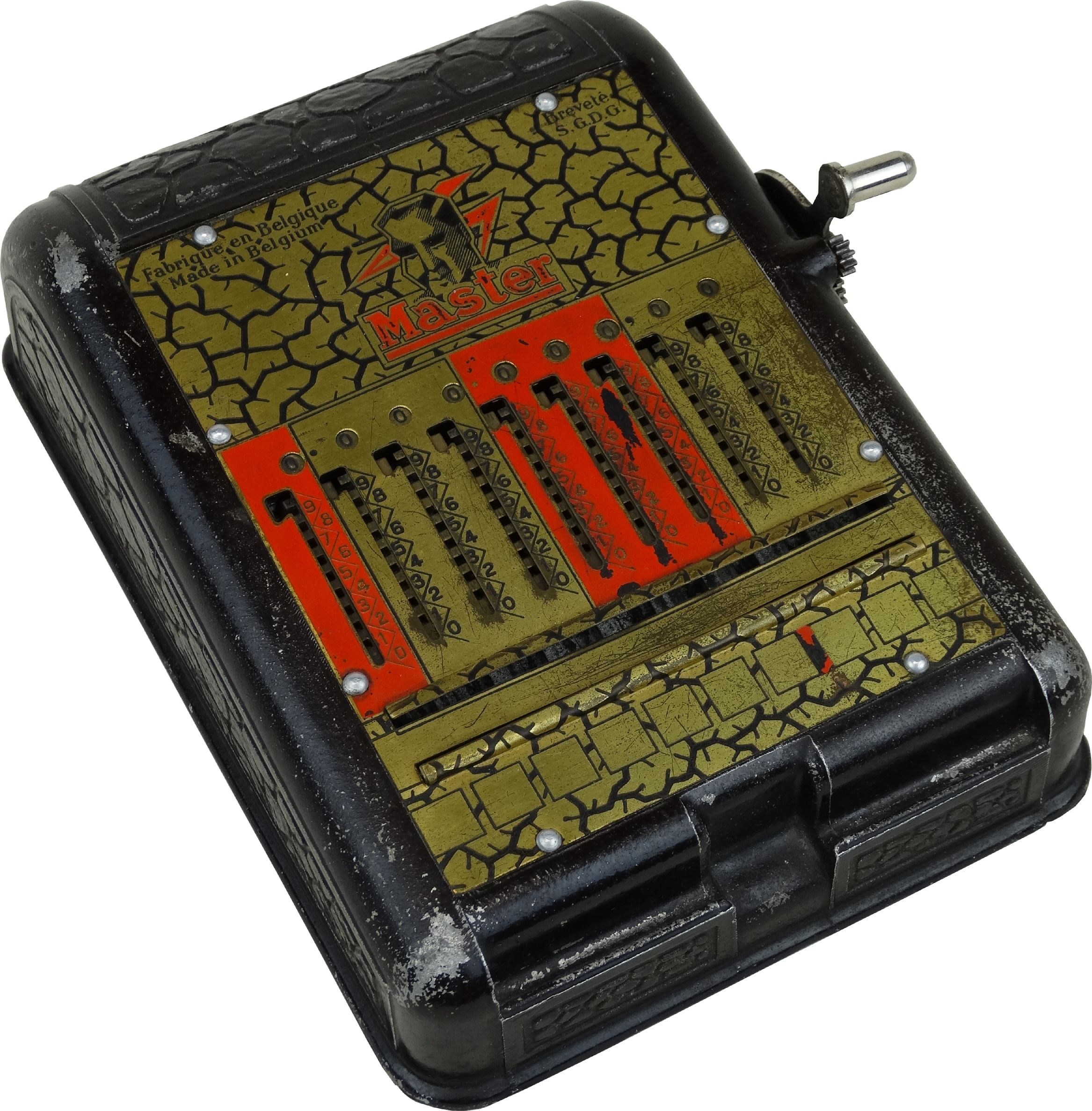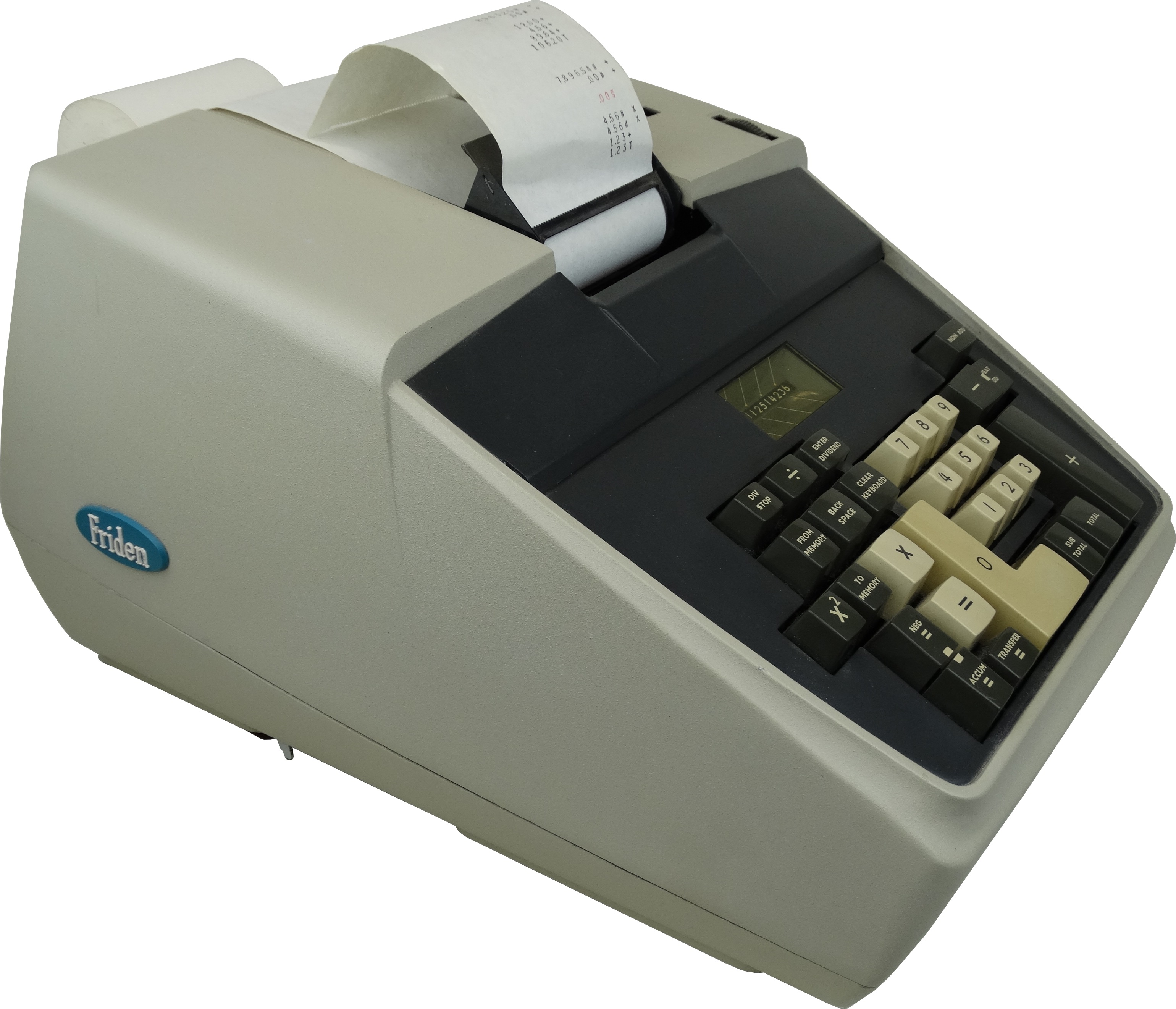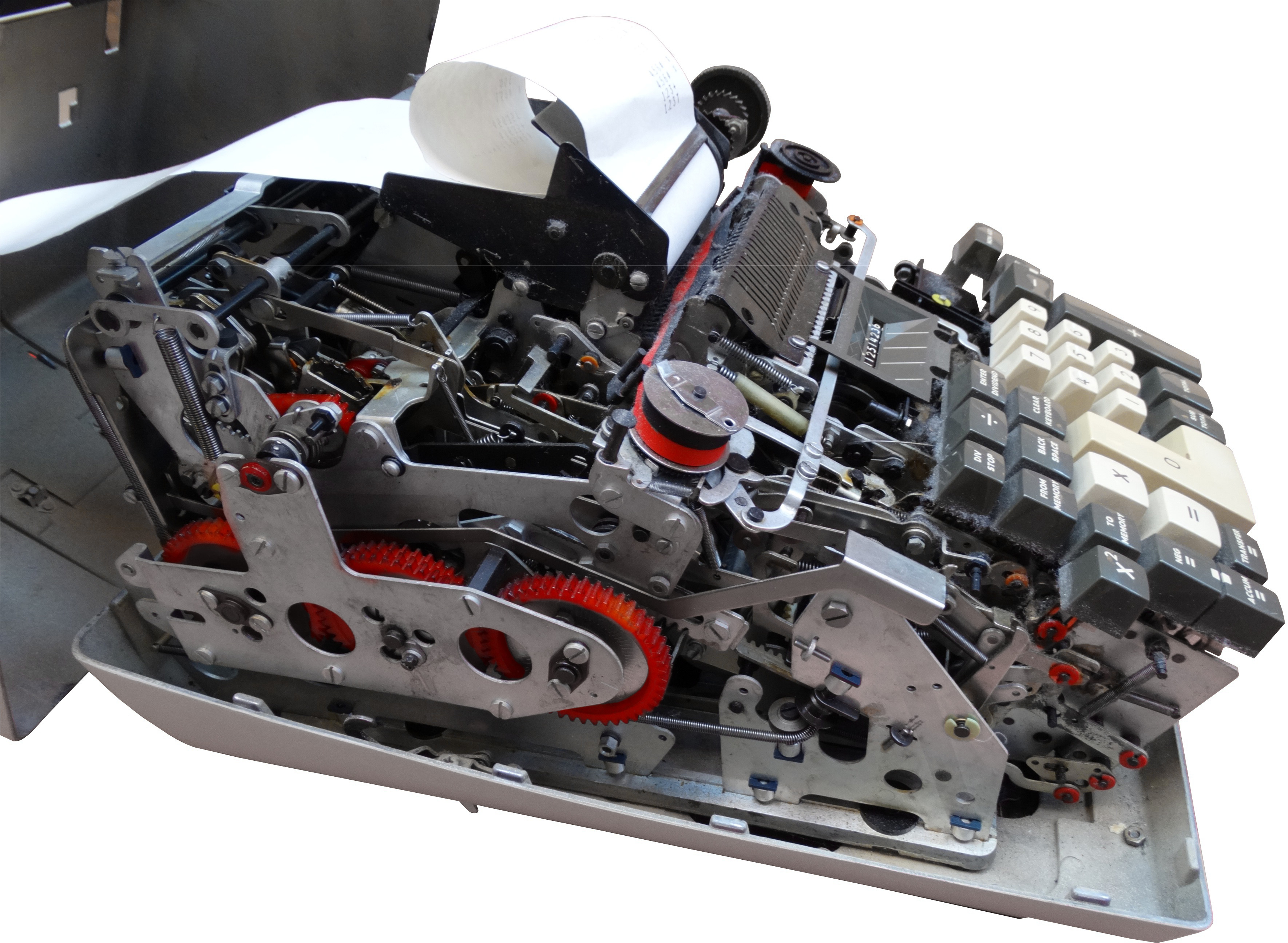The "Master" company, with its headquarters in Brussels and production in Liège, is sometimes described as the only Belgian manufacturer of mechanical (pocket) calculators. This is certainly true if one restricts oneself to calculators of the "slide adder" type and does not take into account the relatively unknown "Mads", as well as the didactic "Controleur des Calculs" by Fernand Platiau. The Belgian Slide Adder by Master was produced and marketed in several variants and under several names: Business, Master, Belga Novic, Efficience, All, Sirius and DA 702.
The principle of all these calculating aids was the same, namely that of the American G.B. Fowler, as mentioned in the Business brochure (patent 1890). However, the design of the various models was quite different and evolved over time.
Standing in front of the Continental Automotive Benelux factory on the Generaal de Wittelaan in Mechelen, you wouldn't think that, fifty years ago, mechanical calculating machines of the Friden-Singer brand were produced here. The knowledge of fine mechanics was a definite advantage for the company Alfred Teves when it started to produce brake systems for the automotive industry in 1971. The company was taken over by Continental Automotive Benelux in 1998. From 1962 to 1971, however, Friden Mechelen N.V. was mainly active in the production of mechanical calculators. In addition to the model 1217 in the exhibition, models 211 and 213 were also produced. In the staff newsletter of 1967, the 50,000th machine produced is mentioned, unfortunately without any model details. Friden in Mechelen was also involved in the development of copiers (model 1070) and franking machines (model 9110/9232).
Finally, Robert Kling GmbH also had a Belgian branch, N.V. Kling in Wervik. Before the customs union, VAT had to be paid on products imported from other EU countries. Often half-finished products were imported, which meant paying less tax, and then finished in Belgium - this was also often the case with cars. Robert Kling GmbH in Wetzlar was not allowed to resume production of ball bearings after the war, so it started producing calculators as an alternative. From 1958, the focus shifted to adding machines and cash registers, and the resumption of bearing production led to the discontinuation of the company's own line of "Rokli" pinwheel machines. Instead, Schubert machines were sold, and later the Czechoslovakian Calcorex machines from TRS in Zagreb. Both the Kling cash registers and the Calcorex machines were assembled, distributed and repaired in Wervik. After 1973, Robert Kling GmbH returned entirely to the manufacture of ball bearings and still exists today in Wetzlar as IBC Wälzlager. N.V. Kling in Wervik went bankrupt in 1992.
Business, Master (Liege), 1926-1930
Each of the nine sliders is individually mounted on two balls for smooth sliding. The handle at the top is used for re-setting.

Collection: E. Smet (item 60)
Belga Novic, Master (Liege), from 1931
The register is zeroed by means of a gear and spring mechanism. In this model the sides are no longer made of wood.

Collection: E. Smet (item 234)
Efficiency, Master (Liege), from 1931
In this example, the typical head-with-lightning can be seen, very reminiscent of the illustrations in Kardan's books. Zeroing is done with a rotating handle.

Collection: E. Smet (item 159)
Business (Brussels), 1956
As well as manufacturing Master calculators, Hankard was also a publisher and author of a number of books on business practice. He used the pseudonym Kardan for these.

Collection: E. Smet (item 159 b)
Efficiency, Master (Liege), from 1932
Is the head with winged helmet a reference to the Greek god Hermes? The housing is made of cast aluminium.

Collection: E. Smet (item 340)
Master, Master (Liege), from 1932
Almost identical to the previous catalogue item. On both devices, an aid (called a "multipli") could be inserted between the horizontal guides to aid multiplication.

Collection: E. Smet (item 94)
Master, Master (Liege), from 1935
The multiscriptor was used for multiplication (here, the holder on the left is missing). The lights (red and green) indicate the direction in which the pen should be moved.

Collection: E. Smet (item 353)
Master, Master (Liege), from 1935
Inside the case is a wooden holder for the battery. A cable connects to the stylus (which is missing here) and closes the circuit depending on where the slider is touched. When the red light is on, you move the stylus up; when it is green, you move it down. The DA 702 devices (see below) have only one light, which lights up when the pen needs to be moved upwards.

Collection: E. Smet (item 91)
DA 702, Master (Liege), ca.1958
The illustration and text on the front refer to the World Exhibition of 1958 in Brussels. The register is zeroed by means of a crank.

Collection: E. Smet (item 83)
DA 702, Master (Liege), 1969
The multiscriptor consists of two strips, one for the multiplier and one for the multiplicand. When the lamp lights up, the stylus should be moved upwards.

Collection: E. Smet (item 248)

Collection: E. Smet (item 248 b)
DA 702, Master (Liege), ca 1969
This is the same version as the one higher, but powered from the electricity mains. As there is no nameplate, it can't be confirmed that it still operates on 110V. Further research is needed.

Collection: E. Smet (item 341)
Kling F330, N.V. Kling (Wervik), ca. 1965
This product of the Czechoslovakian firm TRS is a typical late pinwheel machine for one hand operation, which was also sold under the names "Calcorex" and "Zagreb" in addition to the "Kling" label. The machine has a number of interesting features, such as both registers being zeroed with levers in the middle of the carriage rather than at the sides. No doubt very effective in preventing the handles from breaking if the machine is accidentally knocked off the table. See also the bright orange TRS/Calcorex 403. A disadvantage is that the parts for the pinwheel cylinder are die cast from a zinc alloy. The metallurgy of the process was not yet fully developed, and the result is that after a few decades the material becomes brittle in an unpredictable way and breaks apart. This machine also has this problem with the right-hand setting pin. Unfortunately, the warranty expired already some time ago.

Collection: C. Vande Velde
1217, Friden (Mechelen), 1967-1970
Whether this promise can be kept isn't exactly clear from the size of the manual that came with the machine. The fact is that Friden launched this printing calculator for the four main operations (+, -, x, : ) and automatic squaring at a time when they were already selling (non-printing) electronic machines. This exquisite example of fine mechanics was made exclusively in Mechelen! Not surprisingly, Continental Automotive Benelux is still manufacturing precision components for the automotive industry (e.g. electronic stability control systems) on the same site more than 50 years later. Note the "visual control window" above the keyboard, which allows you to check and correct the numbers you have entered before they are used in the actual calculation. On 21 August 1970, the last Friden "printing calculator" rolled off the production line, model 1217 with serial number 40310.


Collection: Continental Automotive Benelux (Mechelen)